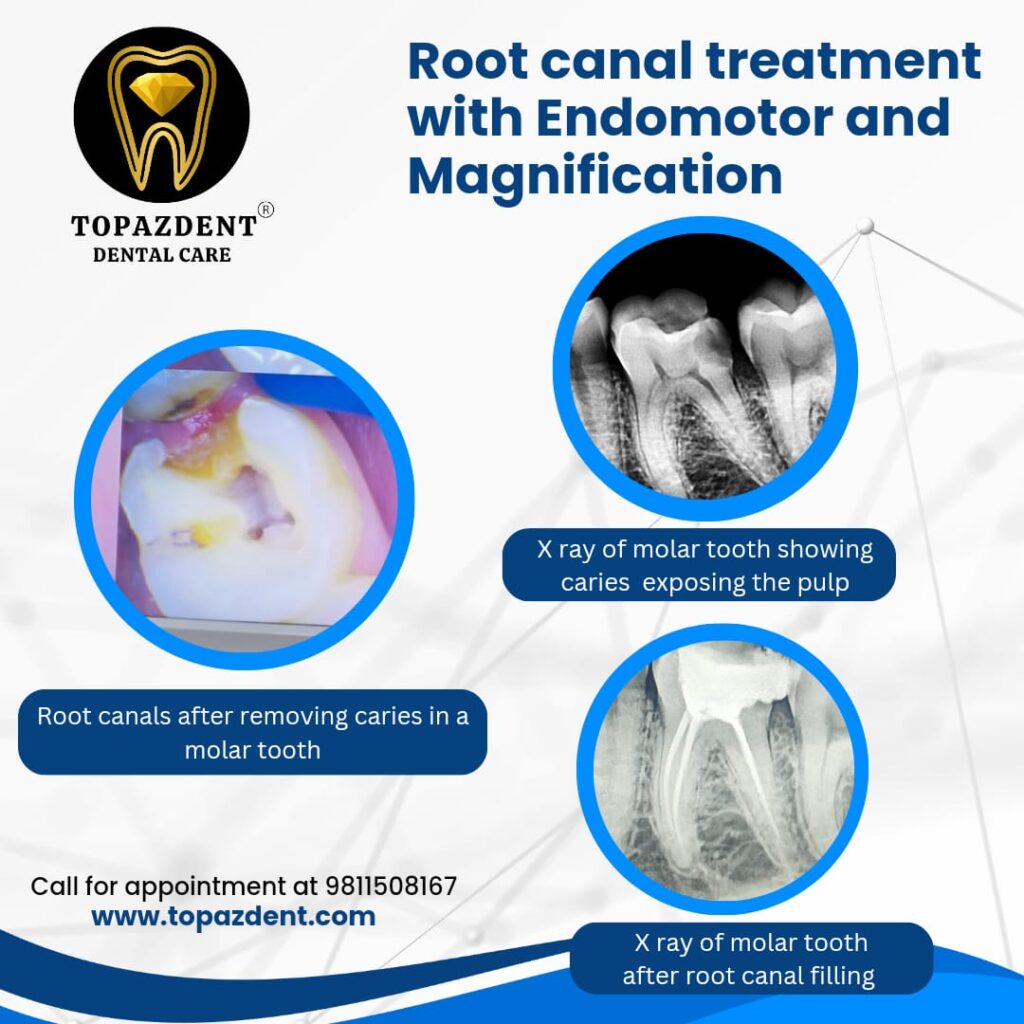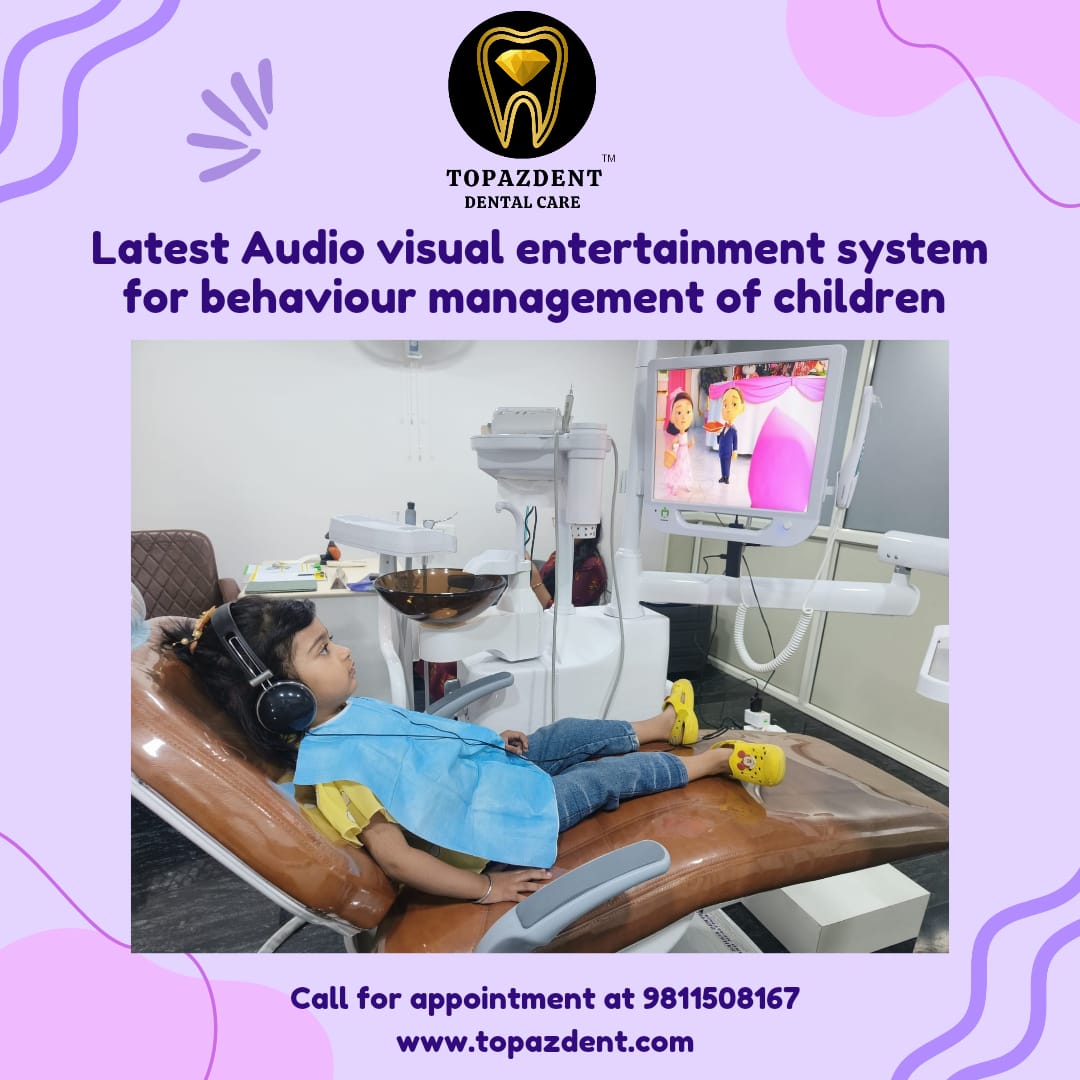Welcome to Topazdent Dental Care! If you’re experiencing severe tooth pain or sensitivity, you might need a root canal treatment. Here at Topazdent Dental Care, we use advanced technology, including endomotors and magnification, to ensure precise and effective root canal treatments. This blog will guide you through the benefits, procedure, and why choosing us can make all the difference in your dental care.
What is Root Canal Treatment?
Root canal treatment, also known as endodontic therapy, is a dental procedure used to treat infection at the center of a tooth (the root canal system). It involves removing infected or damaged pulp, cleaning and disinfecting the inside of the tooth, and then filling and sealing it to prevent further infection.

Benefits of Using Endomotor and Magnification in Root Canal Treatment
1. Enhanced Precision: The use of an endomotor allows for precise control and accuracy during the root canal procedure. This advanced tool helps in efficiently cleaning and shaping the root canals.
2. Improved Visibility: Magnification, often provided by dental microscopes or loupes, offers enhanced visibility of the intricate root canal system. This ensures thorough cleaning and reduces the chances of missing any infected areas.
3. Increased Success Rates: The combination of endomotor and magnification significantly improves the success rates of root canal treatments. Accurate removal of infected tissue and proper sealing of the canals prevent future infections and complications.
4. Reduced Treatment Time: The efficiency of an endomotor speeds up the procedure, reducing the time you spend in the dental chair. This makes the experience more comfortable and less stressful for patients.
5. Minimized Discomfort: With precise tools and better visibility, the procedure is less invasive, leading to a quicker and more comfortable recovery.
The Procedure for Root Canal Treatment with Endomotor and Magnification
1. Diagnosis and Preparation: Our dentist will first examine your tooth using digital X-rays to assess the extent of the infection. Local anesthesia is administered to numb the area, ensuring a pain-free experience.
2. Accessing the Root Canal: A small opening is made in the crown of the tooth to access the root canal system. The endomotor is then used to clean out the infected pulp and shape the canals.
3. Cleaning and Disinfecting: With the aid of magnification, the dentist thoroughly cleans and disinfects the root canals, ensuring no infected tissue remains.
4. Filling and Sealing: The cleaned canals are filled with a biocompatible material called gutta-percha and sealed with a dental adhesive to prevent future infections.
5. Restoration: Finally, the tooth is restored with a crown or filling to protect and restore its function and appearance.
Why Choose Topazdent Dental Care?
At Topazdent Dental Care, we are committed to providing the highest standard of care using state-of-the-art technology. Our skilled team of dentists ensures that every root canal treatment is performed with precision and care, utilizing endomotors and magnification for the best possible outcomes. We prioritize your comfort and recovery, offering personalized treatment plans tailored to your needs. ChoosingrootcanaltreatmentwithendomotorandmagnificationatTopazdentDentalCaremeansoptingforprecision,efficiency,andsuperioroutcomes.Contactustodaytoscheduleyourappointmentandexperienceadvanceddentalcarethatprioritizesyourhealthandcomfort!
References
1. American Association of Endodontists. (2021). Root Canal Treatment. Retrieved from [AAE](https://www.aae.org/patients/root-canal-treatment/what-is-a-root-canal/)
2. Mayo Clinic. (2020). Root Canal Treatment: Procedure, Recovery, and Risks. Retrieved from [Mayo Clinic](https://www.mayoclinic.org/tests-procedures/root-canal/about/pac-20385212)
3. WebMD. (2021). Root Canal Therapy. Retrieved from [WebMD](https://www.webmd.com/oral-health/guide/dental-root-canals)


